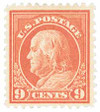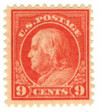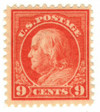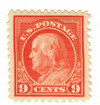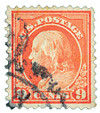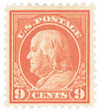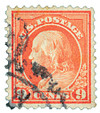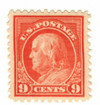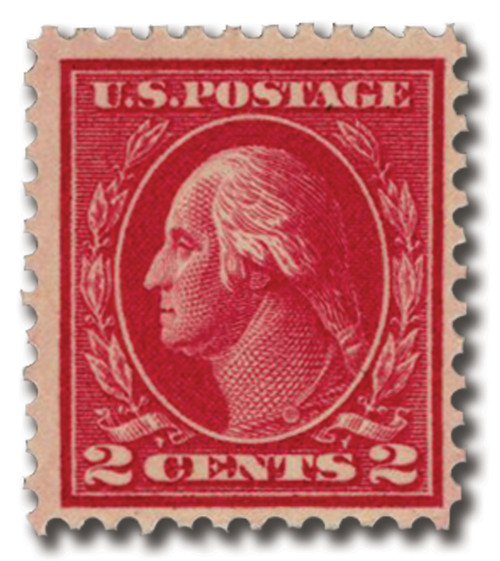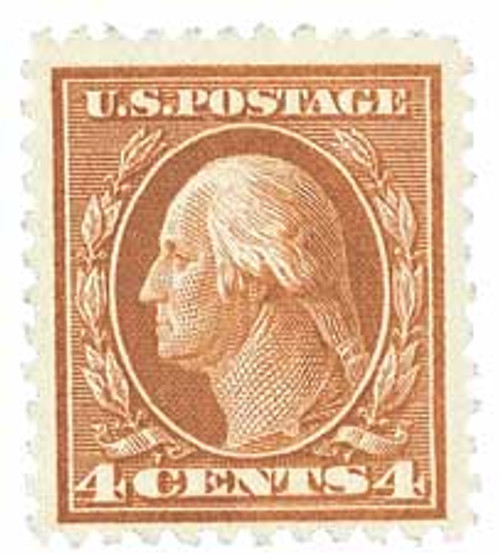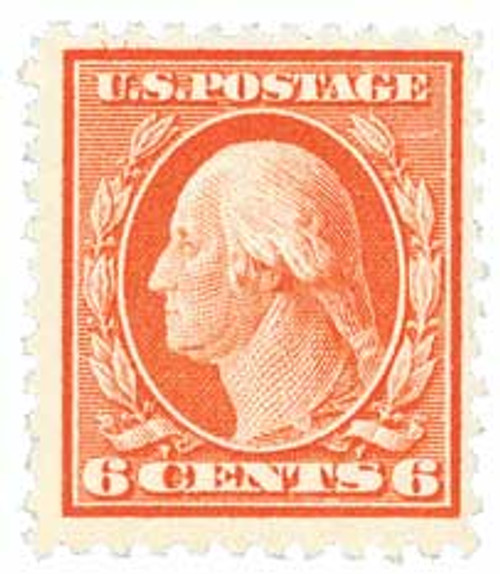
# 509 - 1917 9c Franklin, olive bister, perf 11
U.S. #509
1917-19 9¢ Franklin
The entry of the U.S. into World War I led to an increase in the domestic first class mail rate from 2¢ to 3¢ per ounce. During the increase, which lasted from November 1917 to July 1, 1919, U.S. #509 paid domestic fees for letters that weighed over 2 ounces. A rare variety exists in which both perf 10 and perf 11 gauge was used, with the 11 gauge perf on the top or bottom.
Flat Plate, Perf. 11
The Bureau of Engraving and Printing continued to use the 10 gauge perforation machines on flat plate stamp sheets even after 11 perf. stamps proved successful. In an effort to save money, they used the perf. 10 wheels until they wore out. Beginning in early 1917, stamps produced on flat plate presses were given 11 gauge perfs.
That marked the beginning of the flat plate perforated 11 Series of 1917-19 stamps. Perf. 12 had proven too flimsy, and perf. 10 was too difficult to separate without damaging the stamp, so perf. 11 became a satisfactory solution.
9¢ Franklin, issued to satisfy the rate for letters weighing from two to three ounces
Issue Date: March 1917
Category: Definitive
Printed by: Bureau of Engraving and Printing
Printing Method: Flat plate, using plate of 400 with four panes of 100
Watermark: None
Perforation: 11
Color: Salmon red
Water-activated Gum
U.S. #509
1917-19 9¢ Franklin
The entry of the U.S. into World War I led to an increase in the domestic first class mail rate from 2¢ to 3¢ per ounce. During the increase, which lasted from November 1917 to July 1, 1919, U.S. #509 paid domestic fees for letters that weighed over 2 ounces. A rare variety exists in which both perf 10 and perf 11 gauge was used, with the 11 gauge perf on the top or bottom.
Flat Plate, Perf. 11
The Bureau of Engraving and Printing continued to use the 10 gauge perforation machines on flat plate stamp sheets even after 11 perf. stamps proved successful. In an effort to save money, they used the perf. 10 wheels until they wore out. Beginning in early 1917, stamps produced on flat plate presses were given 11 gauge perfs.
That marked the beginning of the flat plate perforated 11 Series of 1917-19 stamps. Perf. 12 had proven too flimsy, and perf. 10 was too difficult to separate without damaging the stamp, so perf. 11 became a satisfactory solution.
9¢ Franklin, issued to satisfy the rate for letters weighing from two to three ounces
Issue Date: March 1917
Category: Definitive
Printed by: Bureau of Engraving and Printing
Printing Method: Flat plate, using plate of 400 with four panes of 100
Watermark: None
Perforation: 11
Color: Salmon red
Water-activated Gum



